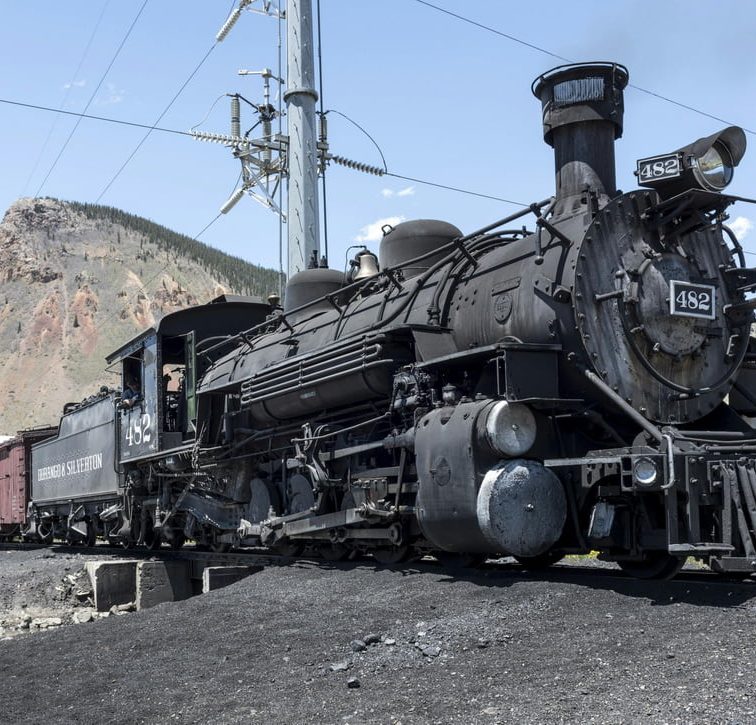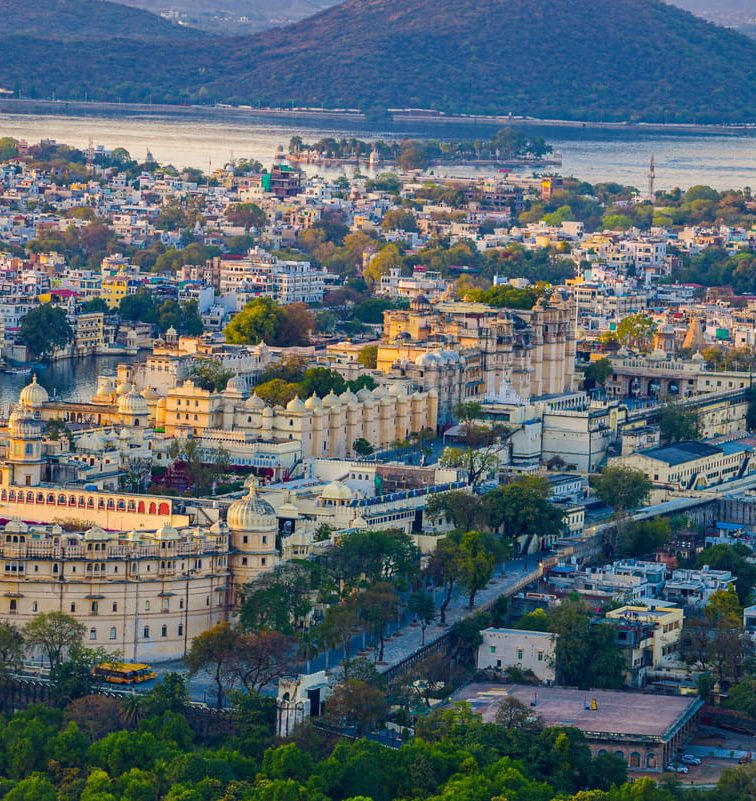Chugging along the plains, spiraling around mountains, and breezing by the beaches, the Indian Railways is an emblem of India’s historical, geographical, and cultural tapestry. With over 167 years of its existence, this vast network has witnessed the transformation of a nation, right from the clamor of independence to the hustle of urbanization.
Every track holds a story, every station has witnessed countless reunions and farewells, and every whistle brings back memories. Embark on this exciting journey as we unfold some of the most interesting facts about this lifeline that has connected billions. All aboard!
1. The Dawn of the Rail Era: Bombay Thane’s Historic Journey
If we time-travel back to 1853, we’d witness the inception of an extraordinary journey. The first train of India steamed off from Bombay to Thane, covering a modest distance of 34 kilometers. This marked not just the beginning of the Indian Railways but also set the stage for a revolution in Indian transport.
The initial coaches, interestingly, were drawn by three steam locomotives named Sultan, Sahib, and Sindh. And with this 57-minute journey, began an era that forever changed India’s connectivity landscape.
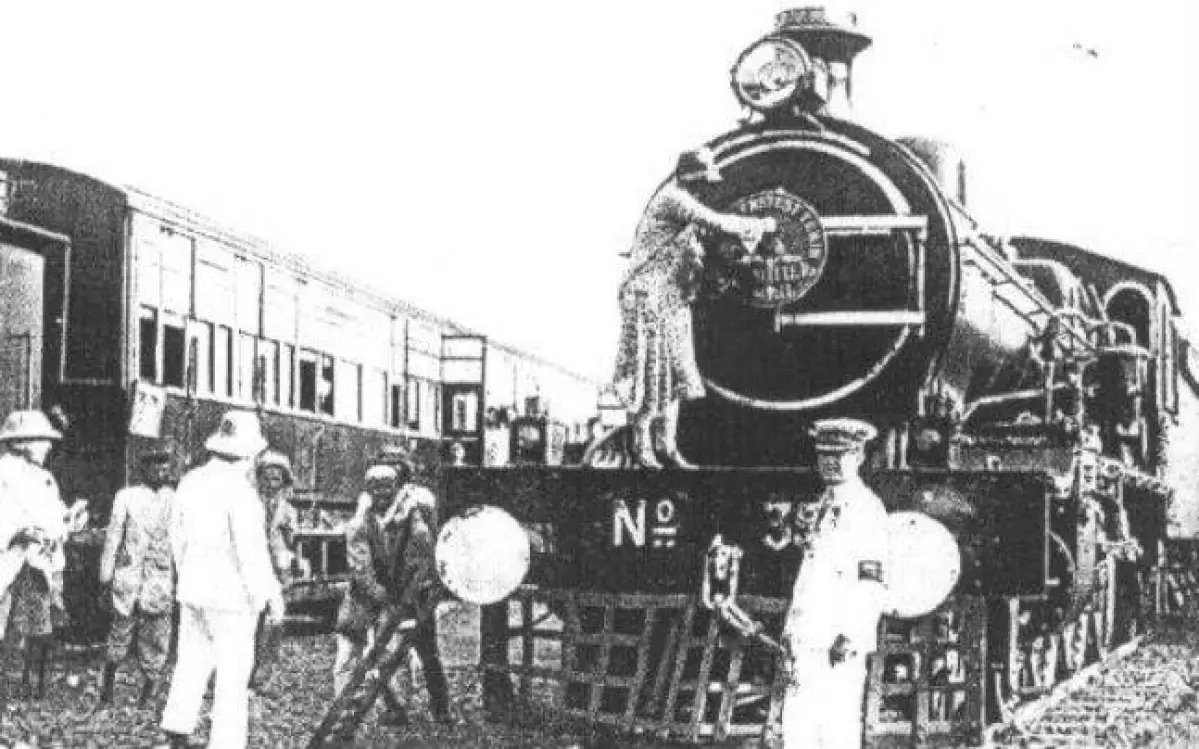
Image source: images.assettype.com
2. Bustling Hubs: The Massive New Delhi Railway Station
When you think of train stations teeming with life, the New Delhi Railway Station undoubtedly stands out. With a footfall of over 500,000 passengers daily, it’s not just one of India’s busiest but also one of the most significant stations in the world.
Positioned strategically, this station serves as a primary gateway to North India. What’s more, its architectural design is an enchanting blend of both the old heritage and the demands of the modern age. Serving around 400 trains daily, the station truly captures the spirit of the ever-moving Indian metropolis.
3. Spread Far and Wide: The World’s Fourth Largest Railway Network
Scale matters, especially when it comes to the Indian Railways. Boasting a whopping track length of over 67,000 kilometers, it stands proudly as the world’s fourth largest railway network. This vast system intricately connects the nation’s urban cities with its remote villages.
Here’s a mind-blowing fact: if you lay the tracks end to end, they could circle the earth almost one and a half times! This expansive reach ensures that no matter where you are in India, a railway track isn’t too far away.
4. From Oldest to Tallest: India’s Notable Rail Bridges
Spanning rivers and gorges, India’s rail bridges are engineering marvels. Among these, the Pamban Bridge stands out as an iconic structure. Built in 1914, it’s India’s first sea bridge and was the longest sea bridge in India until 2010.
Fast forward to the present, we have the highest railway bridge in the world, the Chenab Bridge in Jammu and Kashmir. Towering at 359 meters above the river Chenab, it’s taller than the Eiffel Tower! These bridges not only showcase engineering prowess but also the evolution of Indian Railways over the years.
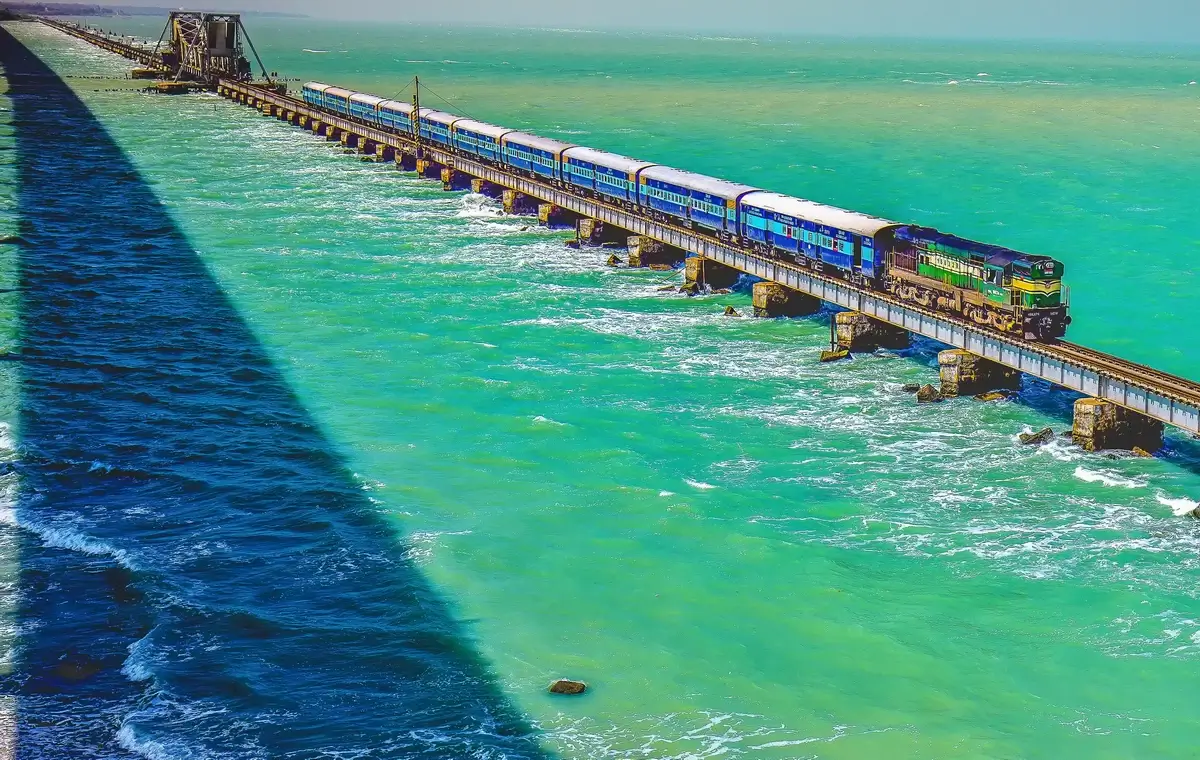
Pamban Bridge. Wikimedia Commons
5. A Date to Remember: Indian Railways on April 16th
April 16th is no ordinary date for Indian Railways. This day, back in 1853, marked the commencement of the first-ever passenger train service in India between Bombay and Thane. The railways have come a long way since that historic ride, but the essence of connecting diverse regions and cultures remains intact.
Today, this date is celebrated as the ‘Foundation Day’ of Indian Railways, reminiscing the journey of more than a century and its significant role in shaping the nation’s destiny.
6. Tickets, Please: The Intriguing Platform Ticket System
Ever heard of a ticket that doesn’t let you travel but allows you to enter a railway station? Welcome to the unique world of the Indian Railways’ Platform Ticket system. Introduced to manage the crowd on platforms, this system ensures that only passengers and their well-wishers are present during boarding.
For a nominal fee, people can accompany their friends or family up to the train, share some final moments, and bid farewell. It’s a heartwarming testament to the Indian sentiment of seeing off loved ones.
7. A Flavorful Journey: The Delightful Railway Food
No train journey in India is complete without the symphony of chaiwalas (tea sellers) and the aroma of freshly made snacks. From the spicy ‘samosas’ to the steaming ‘vada pavs’, the railway food promises a culinary tour of the country.
Different regions offer different specialties. Be it the ‘Biryani’ of Hyderabad or the ‘Poha’ of Indore, each station brings its own flavor to the plate. And who can forget the iconic ‘Rail Neer’, the official packaged drinking water of Indian Railways? Truly, a feast on wheels!
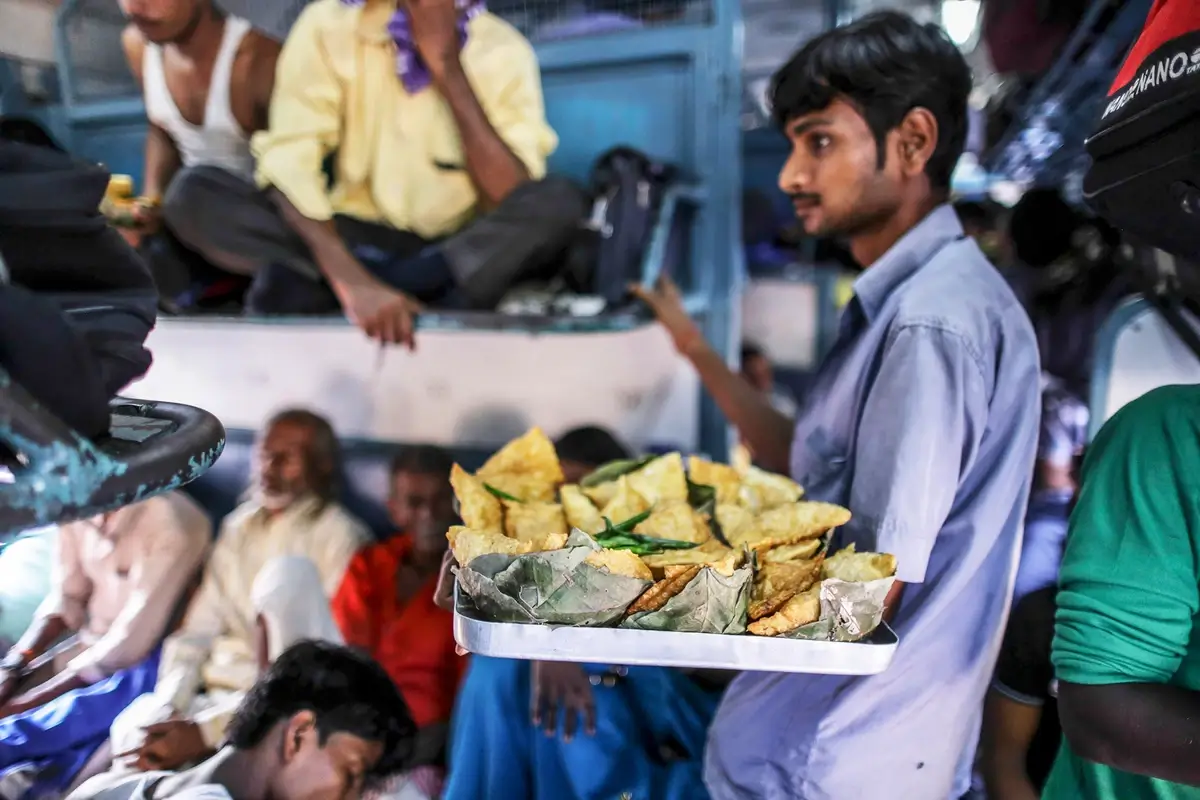
Image source: npr.org
8. Speedy Stars: India’s Fastest Trains
Zooming past landscapes, India’s fastest trains are a testament to speed and efficiency. Among them, the Vande Bharat Express holds a special place, reaching speeds up to 180 km/h. Also known as ‘Train 18’ owing to its development timeline in 2018, it’s a gleaming example of the ‘Make in India’ initiative.
But it’s not just about speed; it’s also about comfort. With state-of-the-art interiors, onboard Wi-Fi, and bio-vacuum toilets, these trains redefine luxury on the go.
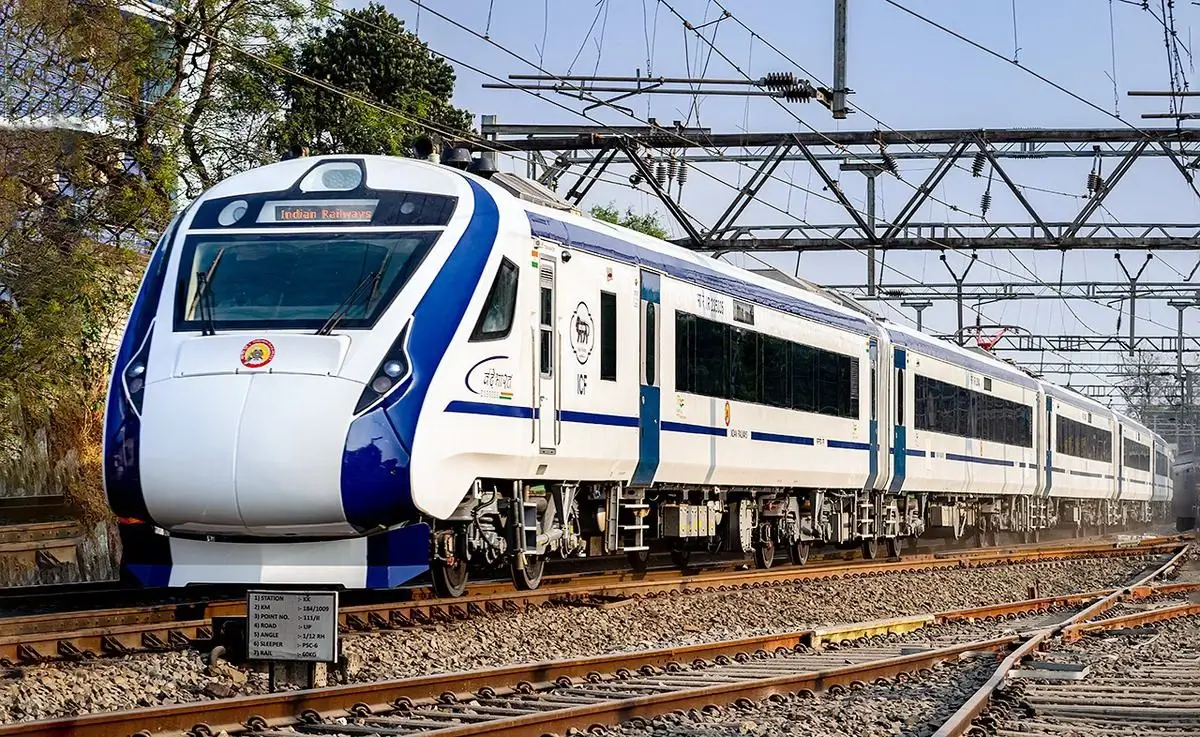
Image source: Wikimedia Commons
9. Rolling on Narrow Tracks: The Toy Trains of India
Chugging along at a leisurely pace, the Toy Trains of India offer a journey straight out of a storybook. These trains, running on narrow-gauge tracks, traverse some of the country’s most picturesque landscapes. Notably, the Darjeeling Himalayan Railway, the Nilgiri Mountain Railway, and the Kalka-Shimla Railway are UNESCO World Heritage Sites.
The charm of these trains lies in their unhurried pace, allowing passengers to soak in the stunning vistas, from lush tea gardens to misty mountains.
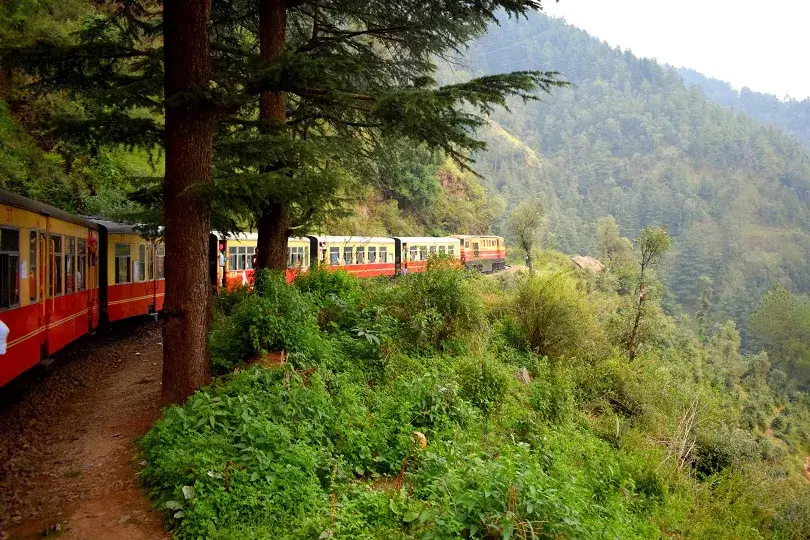
Image source: oyorooms.com
10. Guarding the Frontiers: Railways at the Highest Altitudes
As if the vastness of its network wasn’t enough, Indian Railways also ventures into some challenging terrains. The railways at the highest altitudes are an engineering and logistical marvel. The Bilaspur-Manali-Leh line, once completed, will be the world’s highest railway track, surpassing even the Qinghai-Tibet Railway in China.
Running at altitudes of 5,360 meters above sea level, these railways not only connect remote regions but also demonstrate human determination against nature’s adversities.
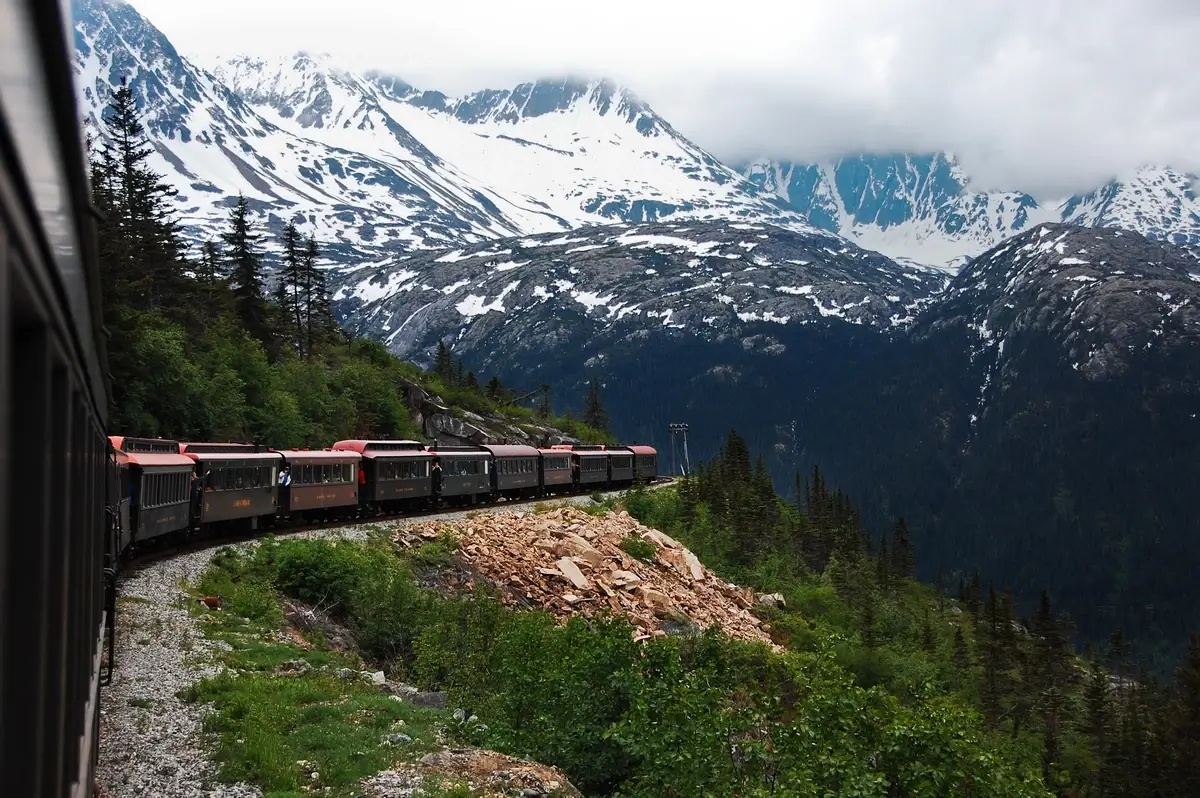
Image source: businesstoday.in
11. Palace on Wheels: India’s Luxurious Train Journey
If you thought trains were just about reaching a destination, the Palace on Wheels would make you reconsider. Offering an unparalleled luxurious experience, this train takes you on a journey through time and the majestic landscapes of Rajasthan and the Taj Mahal.
Boasting regal interiors, gourmet dining, and personalized butler services, this train truly lives up to its name. Every cabin, inspired by the erstwhile royal palaces of Rajasthan, ensures that passengers relive the grandeur of bygone eras.
12. A Train to the Gods: The Pious Vaishno Devi Rail Route
In a country where spiritual journeys often coincide with physical ones, the Vaishno Devi rail route stands as a symbol of faith. Connecting the plains to the mountains of Katra, this route facilitates the pilgrimage of thousands to the sacred Vaishno Devi temple. The serene route, interspersed with tunnels and bridges, only adds to the spiritual experience.
As the train winds its way up, passengers are often found singing devotional songs, making the entire journey a moving prayer in itself.
13. A Milestone of Connectivity: Longest Railway Platforms
If you ever find yourself at the Gorakhpur Junction in Uttar Pradesh, you’re standing on the world’s longest railway platform. Stretching for a staggering 1,366.33 meters, it’s a testament to the Indian Railways’ emphasis on connectivity and capacity.
The sheer length of the platform is not just an engineering marvel but also a bustling hub of stories, with countless journeys starting, culminating, or transitioning here.
14. Railway’s Own Hill: The Unique Ghum Station
Elevated at 2,258 meters, the Ghum Station is not just any other rail stop. Proudly bearing the title of the highest railway station in India, Ghum is a pivotal stop for the Darjeeling Himalayan Railway.
Apart from the scenic splendor, Ghum is also home to a quaint railway museum, offering insights into the rich history of this old heritage line. The fog-laden tracks and the chugging of the toy train only add to its old-world charm.

Image source: oyorooms.com
15. Hearing the Whistle in Films: Bollywood’s Love for Trains
The Indian film industry, popularly known as Bollywood, has a long-standing romance with trains. From iconic scenes like Simran running to catch Raj’s outstretched hand in ‘Dilwale Dulhania Le Jayenge’ to the soulful melodies set against train journeys, the railroad has played a significant role in storytelling.
This amazing fact underscores how deeply trains are woven into the cultural fabric of India, representing journeys, both literal and metaphorical, of love, loss, adventure, and self-discovery.
16. Music of the Rails: Iconic Train Songs
Trains and music share a deep connection in India. Over the years, numerous songs have captured the rhythm of wheels on tracks, the nostalgia of departures, and the joy of reunions. Songs like “Mere Sapno Ki Rani” and “Chaiyya Chaiyya” are not just hits; they’ve defined generations and their relationship with trains.
The imagery of a hero or heroine singing by the window, landscapes rushing by, is a trope that evokes a deep sense of wanderlust and romance.
https://youtu.be/RPeylI2EEnE?si=mn28GSGhCVGwqR2y
17. Digital Transformation: Railways’ Tech-savvy Move
In a rapidly changing digital landscape, the Indian Railways hasn’t been left behind. Embracing technology, it has launched apps for ticket bookings, real-time train tracking, and even onboard entertainment. The IRCTC website alone handles over 1.2 million ticket bookings every day!
With free Wi-Fi at major stations and digital payment solutions, the Indian Railways is not just moving people across distances, but also bridging the digital divide.
18. Celebrating Heritage: India’s Vintage Rail Museums
For history enthusiasts, the Indian Railways offers a treasure trove in the form of its vintage rail museums. The National Rail Museum in New Delhi is a prime example, housing a rich collection of historic locomotives, carriages, and memorabilia. One can even take a ride on a 100-year-old steam locomotive here!
These museums are not just repositories of artifacts; they tell tales of engineering feats, colonial history, and India’s march towards modernization.

Image source: orientrailjourneys.com
19. Manpower Galore: One of the Biggest Employers in the World
Behind the efficient running of trains, platforms, and services, there’s an army of dedicated workers. With over 1.4 million employees, Indian Railways proudly stands as one of the biggest employers in the world. From train drivers and track maintainers to ticket checkers and administrative staff, every role is pivotal.
Their combined efforts ensure that the mammoth machinery of Indian Railways operates seamlessly, day in and day out, serving millions of passengers.
20. The Quaint Mountain Rail: Darjeeling’s UNESCO World Heritage Site
A mix of nostalgia, engineering marvel, and sheer natural beauty defines the Darjeeling Himalayan Railway. Snaking through the lush green tea gardens and steep mountainous terrains, this rail route is more than just a mode of transport; it’s an experience. In 1999, its unique blend of history and scenic beauty earned it a spot as a UNESCO World Heritage Site.
And if you’ve ever imagined a train chugging alongside pedestrians and marketplaces, Darjeeling makes it real with its street-level tracks!
21. Record Book Entry: The Shortest Name & the Longest Name Stations
From the expansive network to the tiny details, Indian Railways is full of surprises. In the record books, you’ll find stations like “Ib” in Odisha with the shortest name and “Venkatanarasimharajuvaripeta” in Andhra Pradesh boasting the longest name. Talk about contrasts!
These quirky names not only highlight the linguistic diversity of India but also add a dash of fun to the journey. Imagine telling someone you’re at Venkatanarasimharajuvaripeta!
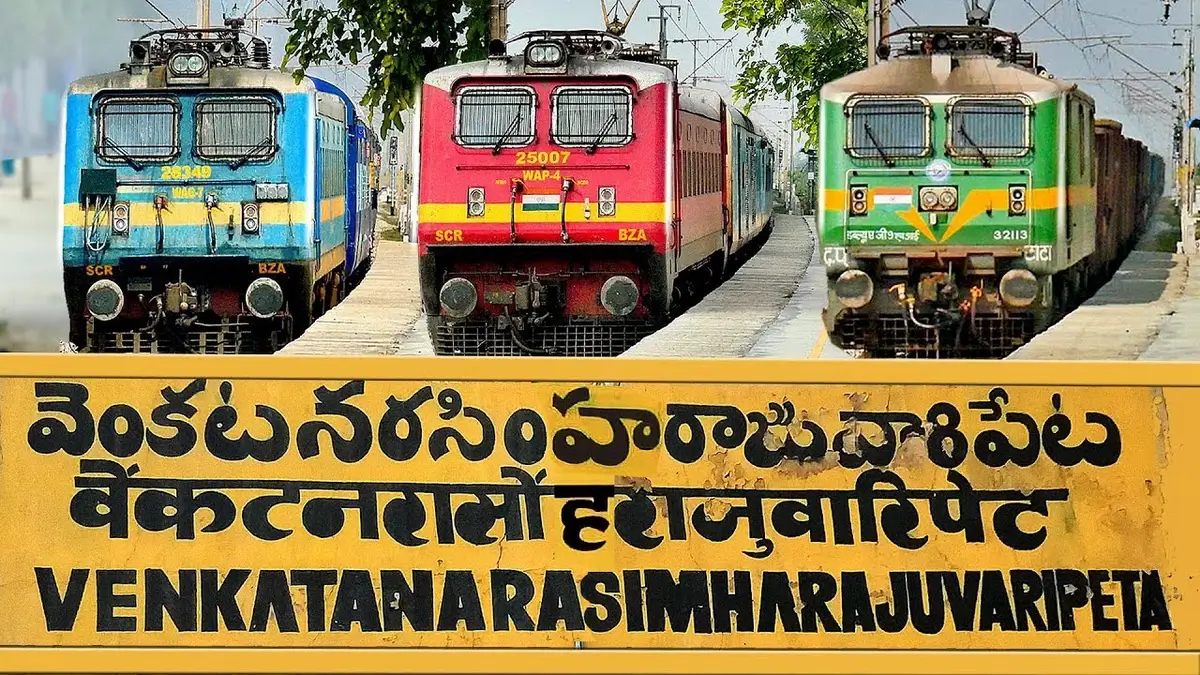
Image source: aanavandi.com
22. An Eco-friendly Ride: India’s Solar-Powered Trains
In a move towards sustainability, Indian Railways is harnessing the power of the sun. The introduction of solar-powered trains marks a significant step in reducing carbon footprints. These trains, adorned with solar panels on their roofs, can generate up to 20,000 kWh of energy annually.
This eco-friendly initiative not only leads to significant fuel savings but also highlights Indian Railways’ commitment to green energy and a cleaner environment.

Image source: engadget.com
23. Safety First: The Amazing Fact of Anti-Collision Devices
With such a vast network, safety becomes paramount. To bolster this, Indian Railways implemented Anti-Collision Devices (ACD). These nifty gadgets, when installed on trains and at stations, prevent collisions by ensuring automatic brakes are applied when danger is detected.
Such technological interventions highlight the railways’ continuous efforts to ensure the well-being of its passengers and crew, reinforcing the fact that while timely arrivals are essential, safe arrivals are non-negotiable.
24. Running on Time: The Punctual Lifeline of Mumbai
Mumbai, the city that never sleeps, relies heavily on its suburban railway system, often dubbed the city’s “lifeline”. What’s remarkable is not just the vast number of people it moves (around 7.5 million daily!) but its punctuality. Despite the dense frequency of trains, the Mumbai locals, as they’re fondly called, have an impressive on-time record.
For Mumbaikars, these trains are more than just a mode of transport; they’re an integral part of their daily rhythm and life.
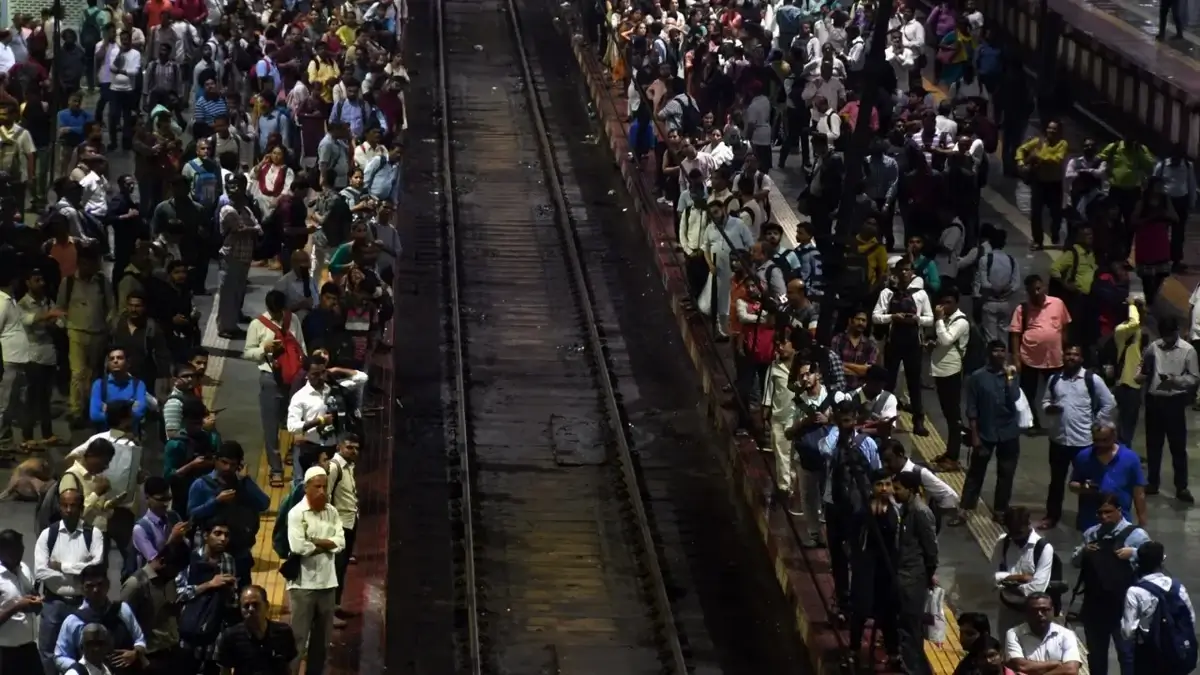
Image source: mid-day.com
25. Beyond Transportation: Railways’ Role in Freedom Struggle
Indian Railways isn’t just about moving people; it has been a silent witness to history. During the freedom struggle, railways played a crucial role. They facilitated the spread of nationalist ideas, helped leaders travel, and even carried protestors to sites of civil disobedience.
Stories of clandestine meetings in train compartments or leaders evading capture by swapping trains are aplenty. In essence, the tracks became veins that carried the blood of the freedom movement.
26. A Touch of Royalty: The Fairy Queen Locomotive
Stepping into the realm of royalty and vintage charm, the Fairy Queen Locomotive stands as the world’s oldest working steam locomotive. Built in 1855, this engine is not just a relic but a working testament to the golden age of steam. Operating between New Delhi and Alwar, the train offers a journey reminiscent of the bygone era, complete with luxury and heritage.
Passengers aboard the Fairy Queen are not just traveling between two destinations; they’re journeying through time.
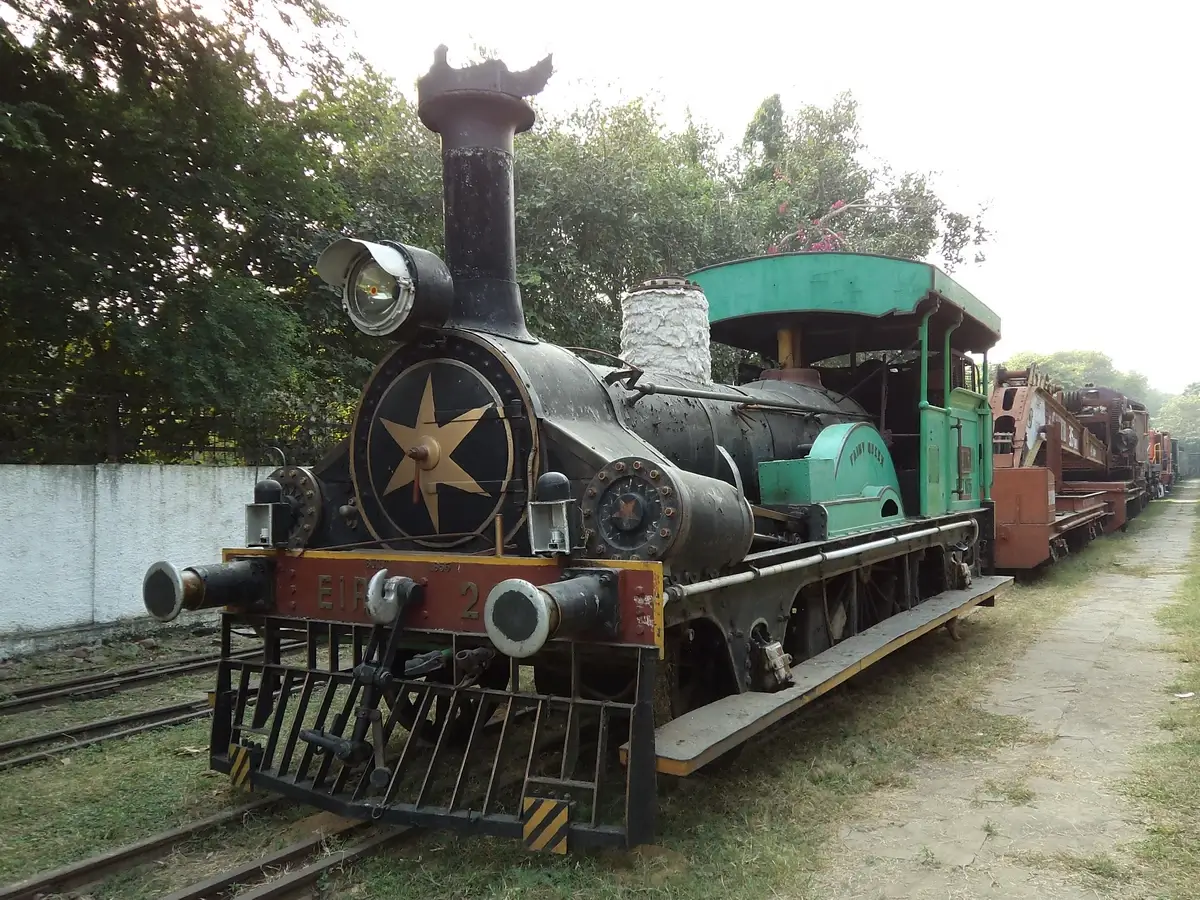
Image source: Wikimedia Commons
27. Tunneling Through Challenges: Longest Railway Tunnels
Navigating through mountains requires more than just tracks; it requires tunnels. Indian Railways boasts some impressive tunnels like the Pir Panjal Tunnel in Jammu and Kashmir, which, at 11.215 km, is the longest railway tunnel in India. These tunnels are a testament to human determination and engineering prowess, piercing through rugged terrains to ensure connectivity.
Every time a train emerges from one of these tunnels, it’s a triumph of human spirit over geological challenges.
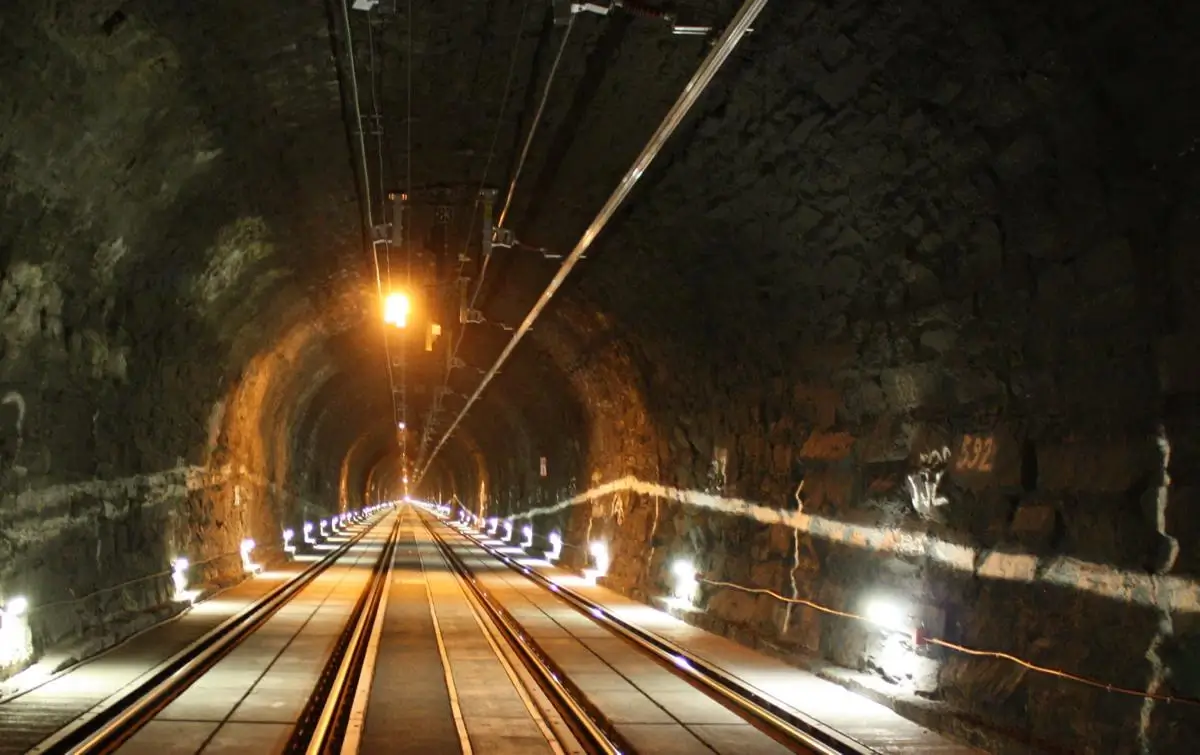
Image source: mistay.in
28. Unplanned Stops: The Fascinating Chain-Pulling System
In a unique system mostly unheard of in other parts of the world, Indian trains come equipped with a chain-pulling mechanism. This allows passengers to halt a train in case of emergencies. When the chain is pulled, the brakes are applied, bringing the train to a stop.
While it’s a system intended for emergencies, it’s often misused for unscheduled alightings or boardings, leading to fines if misused. This fascinating fact about the chain-pulling system showcases Indian Railways’ trust in its passengers but also the challenges that come with it.
29. Floating on Water: The Pamban Rail Bridge Miracle
Connecting the Indian mainland to the island of Rameswaram in Tamil Nadu, the Pamban Rail Bridge is an engineering marvel. Built over a century ago in 1914, it stands as India’s first sea bridge. What makes it even more special is its bascule mechanism, which allows a section of the bridge to lift, enabling ships to pass beneath.
The bridge has withstood the test of time, including cyclones and storms, standing tall as a testament to the brilliance of early 20th-century engineering.
30. Riding With Books: India’s Only Train Library
Think of trains, and the rhythm of wheels, the buzz of conversations, and the scenic landscapes come to mind. But aboard the Deccan Queen, running between Mumbai and Pune, there’s another delight – India’s only train library. Established in 1930, this library allows passengers to pick a book at the start of their journey and return it at the end.
It’s a charming initiative that turns the travel time into an enriching experience, making the journey as captivating as the destination itself.
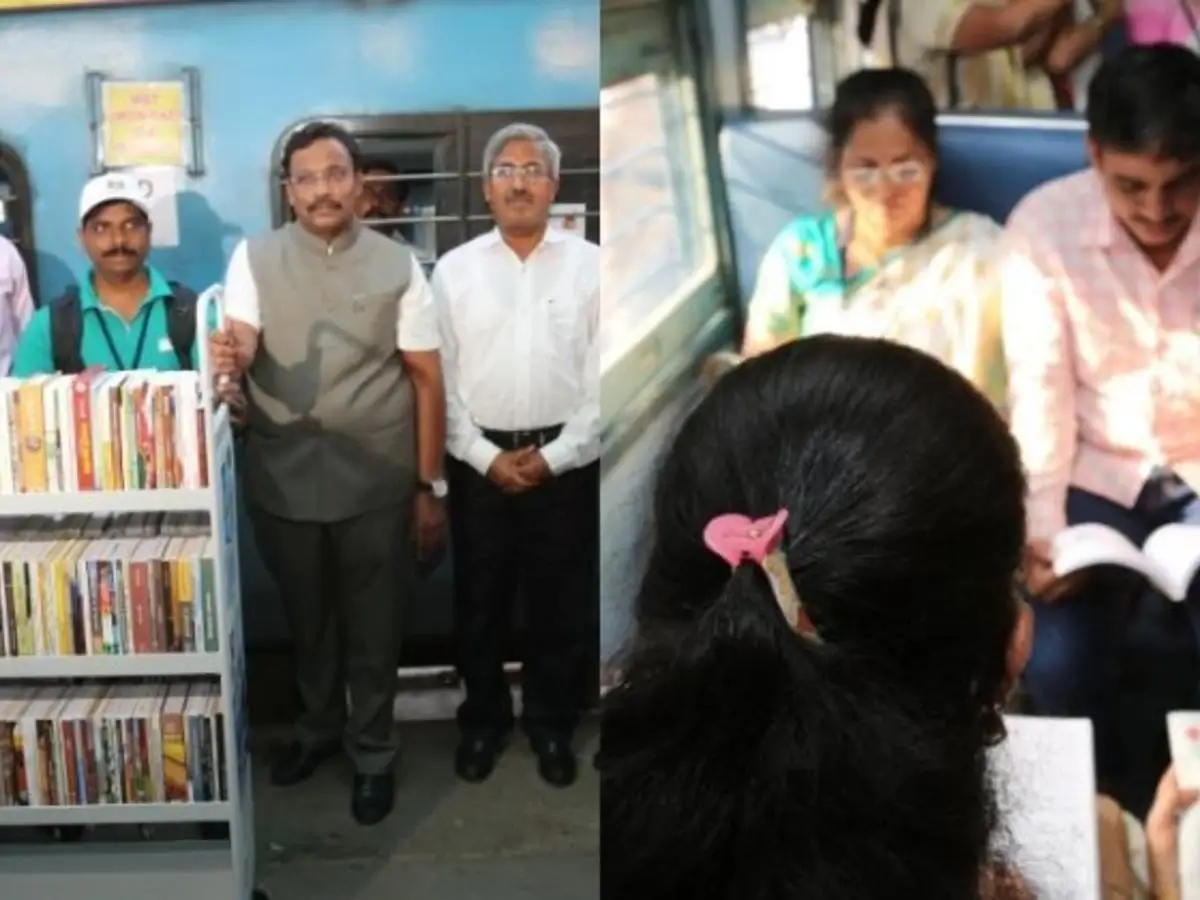
Image source: indiatimes.com
FAQ
Which is the oldest train station in India?
The honor of being India’s oldest railway station goes to Boree Bunder in Bombay (now Mumbai). Boree Bunder functioned as the primary rail terminus for the first passenger railway line in India between Bombay and Thane in 1853. This historic station laid the foundation for what would eventually become the vast network of Indian Railways.
Why trains are popular in India?
Trains have always held a special place in the heart of India for various reasons. They offer an affordable mode of transportation for the masses, connecting even the remotest parts of the country. The vast rail network allows for easy and convenient long-distance travel. Additionally, the diverse topography and the scenic routes make train journeys in India a memorable experience. The cultural significance of trains, from family reunions to festival migrations, further embeds railways in the socio-cultural fabric of the nation.
Which is the fastest train in India?
The Vande Bharat Express, also known as Train 18, is currently the fastest train in India. Capable of reaching speeds up to 180 km/h, it represents a leap in train technology and design in the country.
What is the old train name in India?
The first-ever passenger train service in India was between Bombay (Mumbai) and Thane, and it was simply referred to as the “Passenger Train”. It commenced its maiden journey on 16th April 1853.
How many trains are there in India?
As of the last update, the Indian Railways operates around 20,000 passenger trains daily. This includes long-distance, regional, suburban, and freight trains. The number, however, might vary depending on operational requirements, seasonal variations, and the introduction of new routes.
Which is the longest train route in India?
The Vivek Express, running between Dibrugarh in Assam and Kanyakumari in Tamil Nadu, holds the title for the longest train route in India. This train covers a distance of over 4,200 kilometers, making its journey through nine states of India.
Which is the most important train in India?
The term “most important” can be subjective. However, the Rajdhani Express and Shatabdi Express series are among the most prestigious. Specifically, the New Delhi-Rajdhani Express, connecting the capital city, New Delhi, to other major cities, plays a crucial role given its high speed, priority on the tracks, and its service connecting the administrative capital to different parts of the nation.
How many private trains are there in India?
The Indian government had initiated steps to allow private players to operate passenger trains. However, the full-fledged operations of private trains are still in the nascent stages, with a proposal for 151 private trains to be introduced in the coming years. The exact number might vary as policies evolve and more routes potentially open for private operations.
Which station is very busy in India?
The New Delhi Railway Station is one of the busiest in India. With a footfall of over 500,000 passengers daily and serving approximately 400 trains each day, it stands as a major hub of the vast Indian Railways network.
What is train travel like in India?
Train travel in India is an experience in itself, a blend of diverse cultures, breathtaking landscapes, and pulsating energy. From luxury trains offering royal experiences to the everyday commuter trains teeming with life, every journey tells a story. While the interiors range from plush, air-conditioned coaches to basic sleeper classes, the essence remains the same – a microcosm of India on the move. The symphony of chaiwalas (tea vendors), the aroma of food being sold, and the myriad of languages spoken only add to the rich tapestry of a typical train journey in India.






